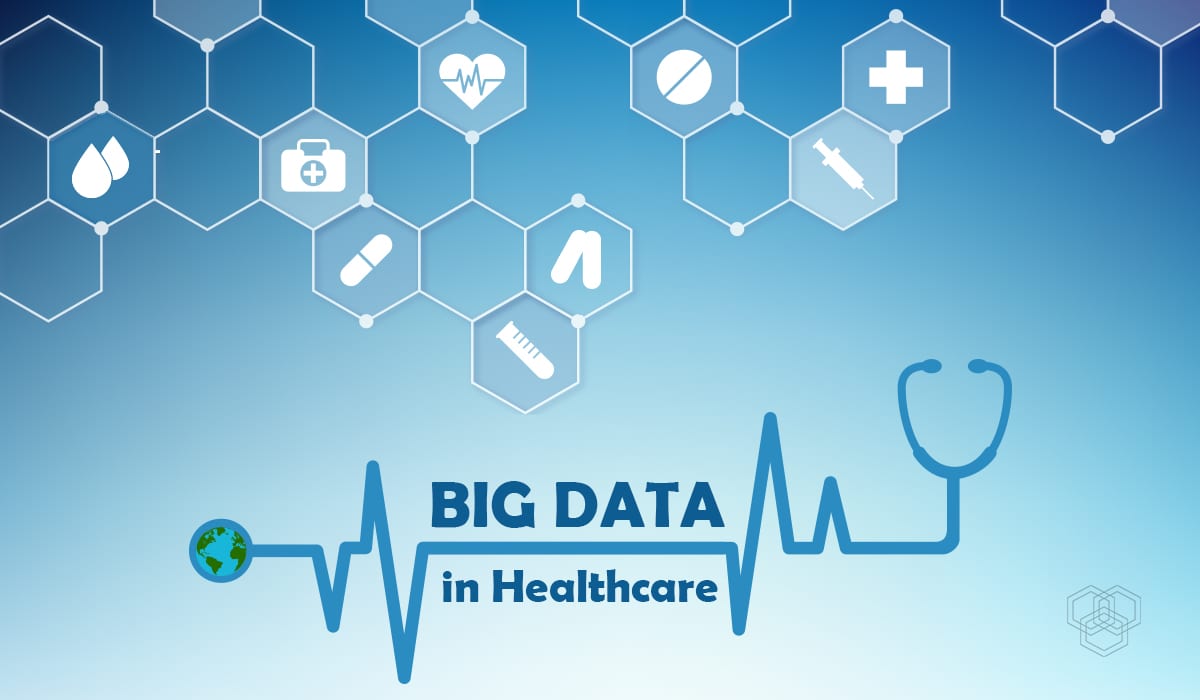Combine the technology with the likes of AI and IoT, and you will be able to automate several industries, thus paving the way for automation and increased efficiency in patient care.
Big Data is vast, as there is so much data from so many elements that you cannot imagine. In many cases, data scientists are unsure what they can do or should do with the vast amount of data at their disposal in healthcare. There is the structured data that is easy to interpret or at least understand while you have the unstructured variety which also comes with a lot of noise. It is important you are able to differentiate between the two, and can easily understand the opportunities that come your way through this data.
Here, we are not going to talk about what Big Data is, as we have assumed you are aware. Here we will take you through the different issues, and opportunities you might face with Big Data, specifically in the healthcare industry. We aim to understand how useful Big Data is in the industry, and why it is important to consider it. At the same time, we wish to help you understand the challenges you might face when using this technology within the industry, and how you can overcome it.
Let’s get started with the challenges, before we look into the assured promises this technology hints at.
Challenges for Healthcare Industry
When it comes to data in the healthcare niche, there are several challenges that the keepers of the data have to go through before they can start building insights.
- Capturing the accurate data, and cleaning them to be able to divide them into properly defined clusters can prove to be a major challenge for those working in this industry. When the data is transmitted from the healthcare channels, you will find yourself surrounded by lots of data, and not everything makes sense. In many cases, the accuracy of the data captured can be questioned. It becomes difficult to capture data that is clean and properly defined. You need to work your way through several data points before you can capture the right data. For instance, if the person is suffering from more than one issue, and the EHR has not been able to capture all the symptoms because the healthcare providers don’t have the same methods, it becomes difficult to capture the data related to the person, and analyse them. here we have talked in detail about capturing the data. What we did miss out on is the cleaning and clustering of the data, which is essential if you want to build insights around it. the different data captured from the different points have different formats. You will need to collect them and arrange them systematically before you can work on them. You will need to collect all types of data, and arrange them into the defined clusters, depending on the format and the type of data. As there are several data points in question, understanding which data point will actually help you with the cleaning and arranging part becomes a challenge
- When you are working with sensitive data like the healthcare industry, it becomes quite difficult to store the data in a secure way, without increasing the cost. Storage of the large amounts of data becomes quite an important consideration for those of you who happen to be associated with the healthcare industry. It is not just about storage, but also keeping in mind the different points that need to be applied when storing the data. On-premises storage is one option that a lot of you tend to opt for but, it is quite expensive and inflexible. It also results in the data getting stuck and leading to an inability to scale. With the cloud, you will find disaster management of data extremely difficult. However, when it comes to upfront costs, and expansion, the cloud is your best bet. The best way to resolve the challenges across both sides is to choose a hybrid approach. You can cross between the cloud and on-premises, and keep the data safe and easy to locate.
- For healthcare organizations, data happens to be the most vulnerable aspect. You are constantly worried about protecting the data and securing it from being misused. At this point, when everything is so accessible, and the different devices are at a stage of vulnerability, data security is proving to be a challenge. If you want to avoid being framed by phishing scams, you should opt for HIPAA standards. You should adopt transmission security, and authentication protocols along with control over auditing and integrity to gain maximum control on the data. You should consistently review the data collection and storage methods to ensure complete security of the data.
- Querying and reporting is also a major challenge facing the industry. Poor analysis and reporting can lead to a misguided approach for the key decision makers, which will eventually lead to wrong decisions and major havoc in the industry. Reporting is the process of extracting the data that is required to analyse, and if the data is wrongly extracted or, a different data than what is needed is extracted, then it will make the entire analysis wrong. You need to follow a thoroughly defined process to ensure the data is extracted as needed. It should also make sure that quality data is reported. Apart from extraction and reporting, the visualization of the data, i.e. the representation of the data being reported, is also essential. You need to keep in mind and maintain uniformity throughout the visual representation
The final challenge comes in the form of running data analytics tools that will help attain the requisite insights.
Now that we have discussed the challenges thoroughly, let’s take a quick glance at the opportunities created by Big Data.
Opportunities for Businesses with Big Data
The first type of opportunity is created in the form of the medicine or personalized treatment that can be offered to the patients. You have a good amount of data regarding the patient’s health, their history, their genetic history and other conditions. You now need to analyse all the data, and you can come up with treatment plans that can prevent the condition or cure it. this kind of precision medicine can help patients from the diseases that are genetically transmitted to them.

Wearable technology can help create a lot of solutions. From food safety monitoring to devising the actual health conditions, there are plenty of opportunities available with wearable app. Wearable measured health conditions can be reported in the EHR, which will store the data for further analysis. The real-time data can even be sent to the doctors for informed decisions. Wearables can even be used to determine the quality of food and air quality to understand what issues the person in question can face, and how they can take necessary precautions to avoid the situation
The Big Data analytics can even help learn from the past, and apply the learning to the current situation. For instance, if there has been a medicine prescribed for a particular kind of condition, the machine will let the doctor know about the same, in case another person attends with the same symptom. This will reduce the time taken to provide care, and improve the accuracy of the doctors and their prescriptions. The patient care and the experience of these patients in various scenarios is enhanced as a result.
Summing Up
We have entered the beginning of a new decade with the start of 2020, and Big Data will continue to revolutionize and disrupt industries in this year as well. Combine the technology with the likes of AI and IoT, and you will be able to automate several industries, thus paving the way for automation and increased efficiency in patient care.
It is time though, to overcome the challenges facing the industry, and improve the overall function. You will need to identify methods that can help with accurate extraction, storage and retrieval of data, which will essentially give real-time insights to the end users that can be translated into efficient solutions.
With technology paving way to regulate and automate all aspects of the industry, it’s time to identify the opportunities for your business, and create a healthcare solution that would be useful to the end users.


Join the conversation!